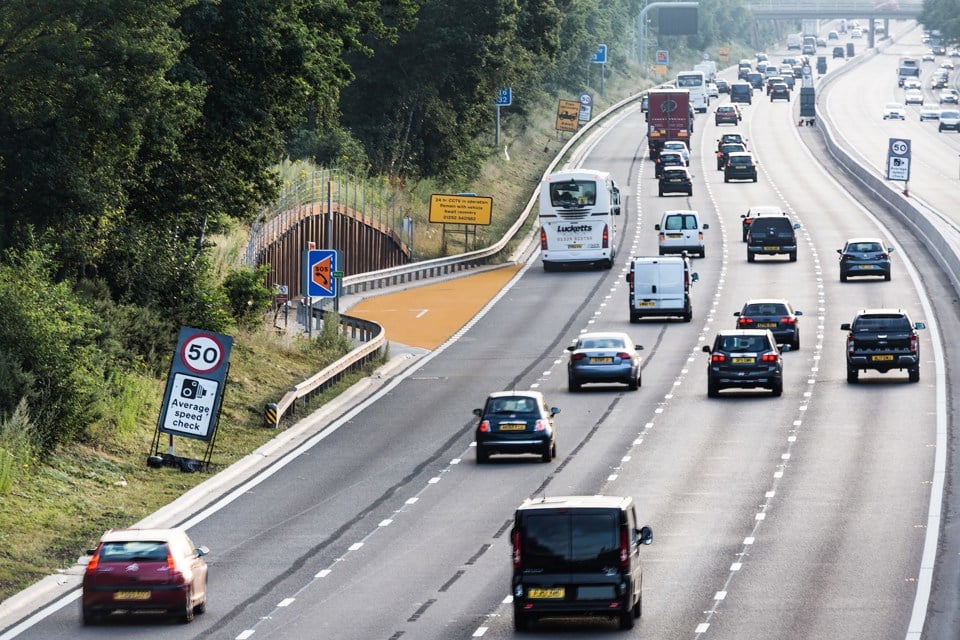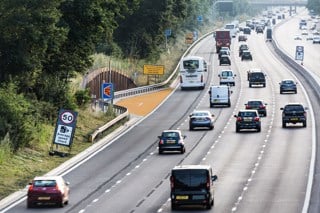A police and crime commissioner (PCC) has renewed his call for a ban on smart motorways after a collision involving a car and a HGV took place in South Yorkshire.
Dr Alan Billings, the police and crime commission for South Yorkshire wrote an open letter to Grant Shapps, MP, secretary of state for transport, last month urging the government to ‘abandon’ smart motorways – where all lanes are live.
Billings belives that smart motorways, such as that along the M1 in South Yorkshire, are “inherently unsafe and dangerous”.
He said: "I am forced to reiterate my concerns and to strongly urge Highways England and the Department of Transport to think again about this type of motorway. I do not believe there is anyone who uses this stretch of the motorway, as I do, who does not feel anxious when driving along it.
"I have received many accounts now from people who have had bad experiences on the smart motorway, even if they have not broken down or been involved in a collision."
On February 12 a heavy goods vehicle collided with a stationary car in a live running lane. One of the occupants of the car was airlifted to hospital with very serious injuries and the motorway was closed for three hours.
Highways England is facing manslaughter charges following the death of a 62-year-old woman on a stretch of smart motorway.
Almost 40 people have been killed on smart motorways in the last five years.
However, a recent survey by Venson Automotive Solutions, found that drivers support smart motorways, with 56% agreeing that they are necessary to help improve road safety and ease congestion.
Half responded saying they see the benefits for congestion levels and a quarter expect smart motorways to ease emissions.
However, one in ten admitted they didn’t know what a smart motorway is, highlighting the need for driver education.
Whilst the majority said they support the introduction of smart motorways, 35% of respondents to the Venson survey disagree, citing safety concerns as the main reason; 38% said they would not feel safe in case of a breakdown and being unable to reach an Emergency Refuge Area, 34% believe it unsafe to use the hard shoulder as a running lane in peak times.
Alison Bell, marketing director at Venson Automotive Solutions, said: “Private motorists and company car and van drivers need to familiarise themselves with the dos and don’ts.
“Businesses also have a duty of care to ensure their drivers know the rules of smart motorways and use them appropriately and safely.
“Every driver must understand what to do in the event of a breakdown or emergency, take notice of the red X above a closed lane, stick to the variable speed limit and keep left as much as possible unless overtaking.”
The Government introduced a series of measures to help improve the safety of smart motorways last year, following a review commissioned by the transport secretary.
Read the PPC's full letter on the South Yorkshire police and crime commissioner website.
























Tony Richards - 25/01/2021 12:20
I still do not understand why they believe that Smart Motorways ease congestion. Work is currently underway converting the M6 in Staffordshire into a Smart Motorway despite there being no issues on it prior to the work commencing. The main problem has been the congestion caused by the works in progress and when they are finished there will be an accumulation of many thousands of lost hours caused by the disruption. Quite often on the already converted M6 Junction 9 the speed limits are always set at the same level irrespective of what the traffic is doing and it seems to be reactive rather than pro active. Looking at the position of all of these Smart motorways I would suggest that they are placed at these locations for a different reason and with the introduction of road pricing I would not be surprised to see the cameras at these sites used for number plate recognition and a network for road pricing already in place